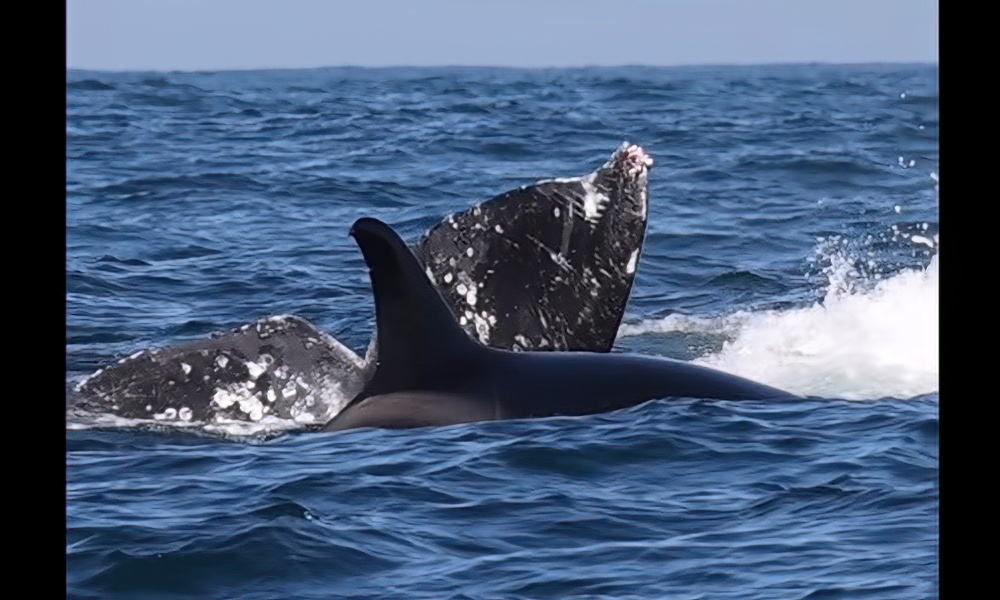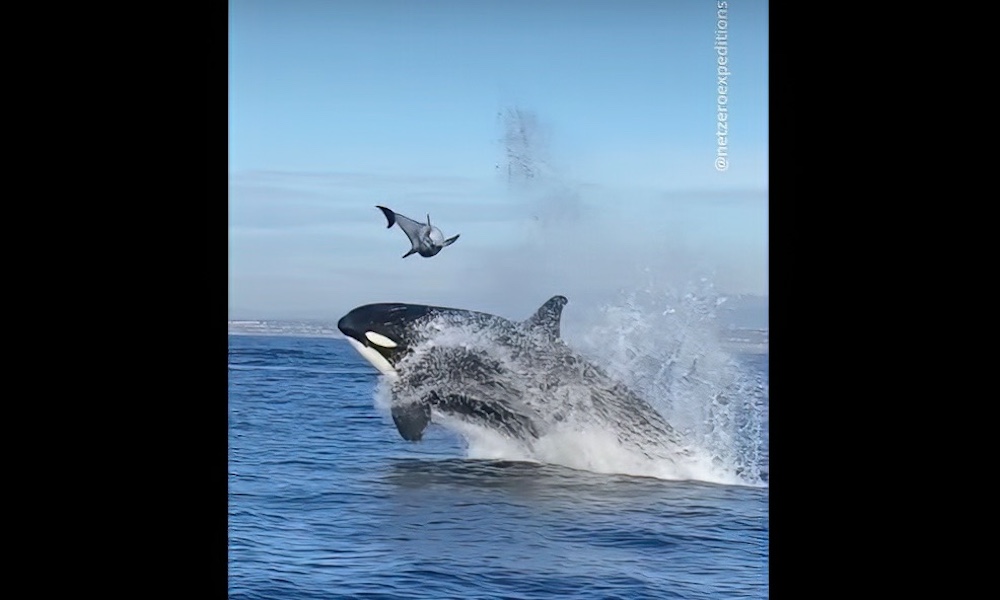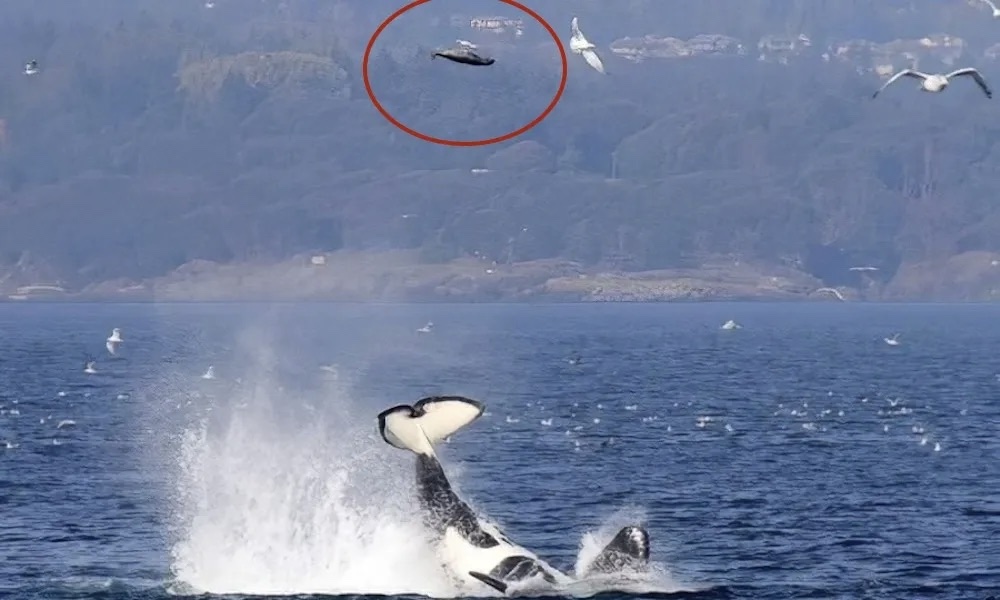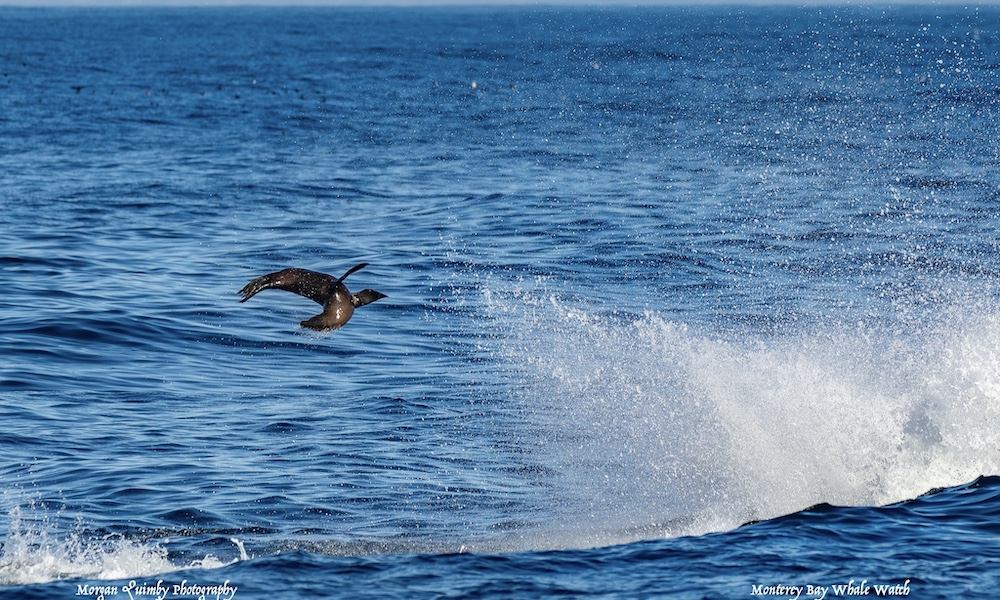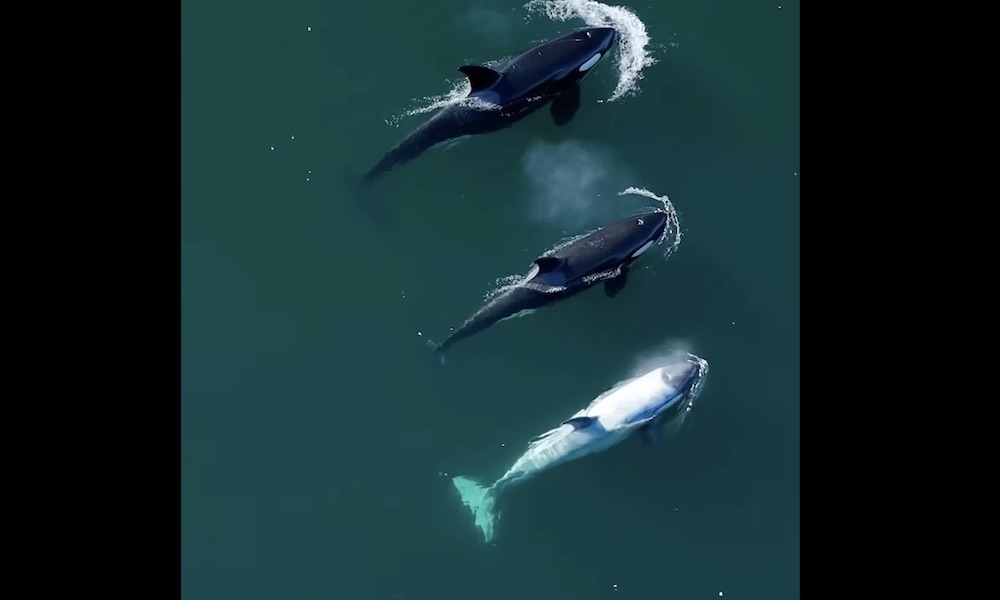A white orca nicknamed Frosty was spotted Sunday in California’s Monterey Bay and images and video footage appear to show a healthy young killer whale.
A white orca nicknamed Frosty was spotted Sunday in California’s Monterey Bay and images and video footage appear to show a healthy young killer whale.
Frosty is the only known leucistic, or partially white orca off California. Some white orcas develop health issues that significantly shorten their life spans.
But Frosty, who was first documented off Monterey as a newborn in August 2019, appeared to be in good shape while hunting with its mother and orcas from another family group.
“We had Frosty the super rare white Killer Whale!” Monterey Bay Whale Watch, which captured drone footage of the orcas during an hours-long encounter, boasted via Facebook.
The California Killer Whale Project, founded by the company’s Nancy Black and fellow researcher Alisa Schulman-Janiger, stated in another post: “The whales hunted an elephant seal and at least one California sea lion, breaching and prey sharing with the carcass!”
Frosty, whose sex is unknown, belongs to a family unit cataloged as the CA216s. Frosty is documented as CA216C1.
Prior to Sunday, the last known Frosty sighting occurred in April off Palos Verdes in Southern California.
In August 2022, a thin-looking Frosty was photographed via drone in Alert Bay, British Columbia.
At the time, Oceanwise Research stated via Instagram: “The measurements of ‘Frosty’ indicate that this animal is quite thin. Having said that, killer whales around this age will often go through a thin period as they are weaned off their mothers milk and then start to fill out in subsequent years.”
Frosty sightings have been sporadic but wide ranging, having occurred from Mexican waters below San Diego to British Columbia.
Frosty is a Bigg’s transient killer whale. These orcas prey almost exclusively on other marine mammals, including gray whale calves. Younger orcas learn from older pod mates and ultimately pass their skills down to new orcas.
On Sunday, Frosty and her mom were with a group known as the CA140Bs, as passengers from several whale-watching companies watched in awe.
Stated Monterey Bay Whale Watch: “The orcas were displaying remarkably social and interactive behavior, with countless breaches and spy hops.”


